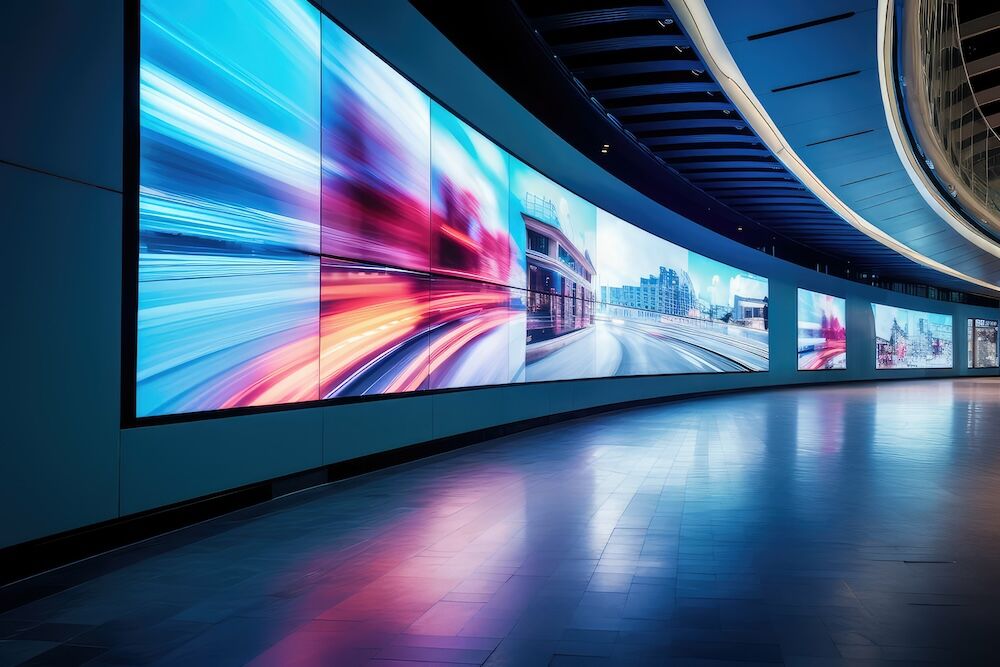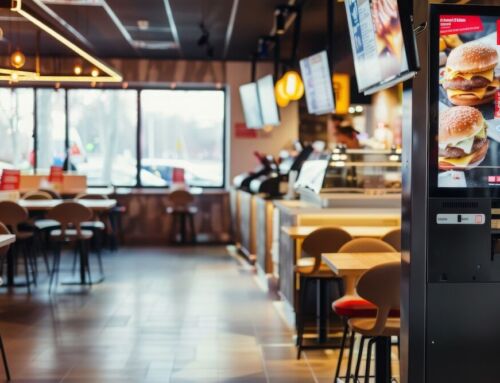Digital screens are not just taking over our children’s attention spans and personal interactions. They are also a rising force in business.
From retail to restaurants, hospitals to hotels, events to education, the digital signage industry is booming. In retail alone, global sales of digital signs are worth upwards of $6bn a year and growing. They’re used for advertising, for information sharing, and for good old-fashioned cosmetic display and entertainment. Use of digital signage has been linked to a 55% increase in ad recall among customers and an 83% increase in engagement.
Of course, the digital screens used in business are a sight bigger than the pocket-sized devices we’re all glued to day-to-day. In fact, size is of the essence when the whole purpose is to increase visibility and engagement with whatever message you want to display.
This has fuelled the growth of a particular sub-sector of the digital signage industry – LED walls. In terms of size, this format takes digital signage up to its ultimate height, scaling displays to (as the name suggests) wall-sized proportions.
But what exactly is an LED wall, how are they used, and what are the benefits? Allow us to share what you need to know…
What is an LED Wall?
An LED wall is a large-format display built from numerous smaller, lightweight LED tiles. The tiles are designed to clip together with the slimmest of bezels (typically under 1mm), so you get a seamless view without distracting lines criss-crossing the display.
Because of their size, LED walls have to be able to show images (and video) in very high resolutions – across such a large area and with pixels the size of a diode, low-resolution images will appear grainy and blurry. They therefore come with suitably powerful processors to handle 4K signals at high refresh rates and scaling algorithms to calculate missing pixel values where necessary to create a higher resolution display. You can also choose different pixel pitches (the density of the pixels on the panels) to suit different viewing distances.
How are LED Walls Used?
LED walls are popular in many different scenarios. What they provide is stunning visual impact. So any place you want to make a statement and grab attention, an LED wall could be the answer.
Some common use cases include:
- Dazzling in-store promotions and dynamic window displays in retail. The way that LED walls scale up the impact of advertising goes hand-in-hand with the huge growth in retail media.
- Creating unforgettable ambience in hotel lobbies and bars.
- Corporate branding and welcome messages in office lobbies, boardrooms and event halls.
- Backdrops for conference stages and lecture halls.
- In-venue live streaming of major events like sports and concerts. Giant LED walls are also a perfect solution for scoreboards and for creating video-driven sets for artists.
- Multi-view displays in control rooms. Groups of tiles can be assigned a different input source to stream different content, replacing the need for multiple screens in places like traffic and security control rooms.
The Benefits of LED Walls
The main benefits of LED walls can be summed up in two words – impact and flexibility. We’ve touched on impact already – the sheer size of a wall-sized display can’t fail to grab attention, and it’s perfect for creating something truly engaging and immersive that people remember.
But the impact an LED wall can give is not just about size. Quality matters, too. The clever technology that makes an LED wall possible delivers stunning visual clarity as well as scale. A large image might grab attention, but it will quickly lose it if the quality is poor. Superb image quality at scale is what leaves a lasting impression.
That’s backed up by flexibility. With conventional digital screens, you’re limited to the size they are built. Not so with LED walls. The modular design means you can scale them to whatever size you like. You can also adjust them to fit different-shaped spaces, to create any aspect ratio desired, and play around with different shapes for impact.
Summary
LED walls are more than just large screens; they are dynamic, scalable, high-impact communication tools that deliver tangible business benefits across virtually every sector. With a screen-to-screen bezel width of just 0.88mm, an integrated matrix processor and UHD/4K resolution across all connected tiles, Acante’s LED wall solutions help you make a massive, memorable impact with stunning visuals at a fantastic price. Get in touch to find out more.




